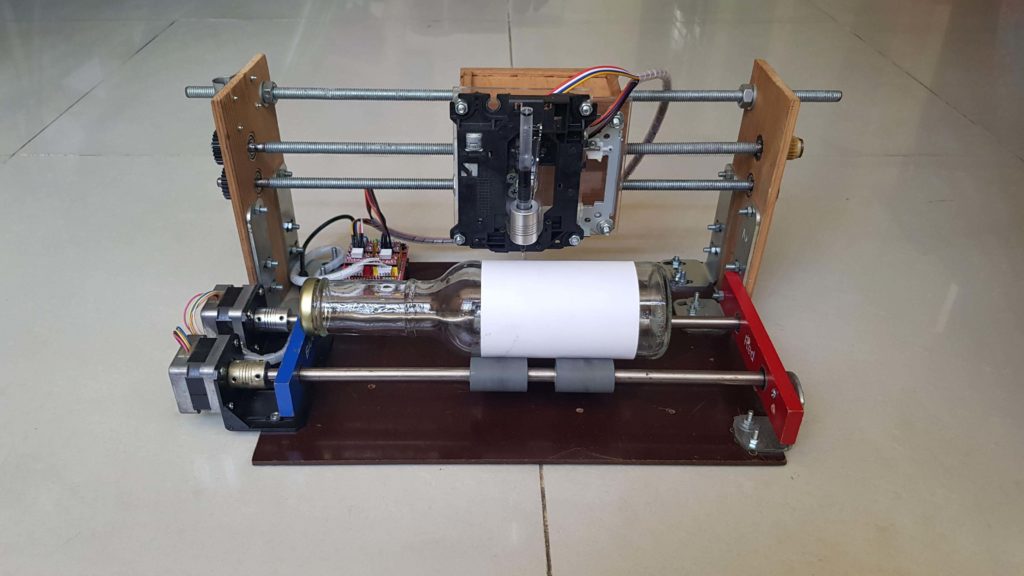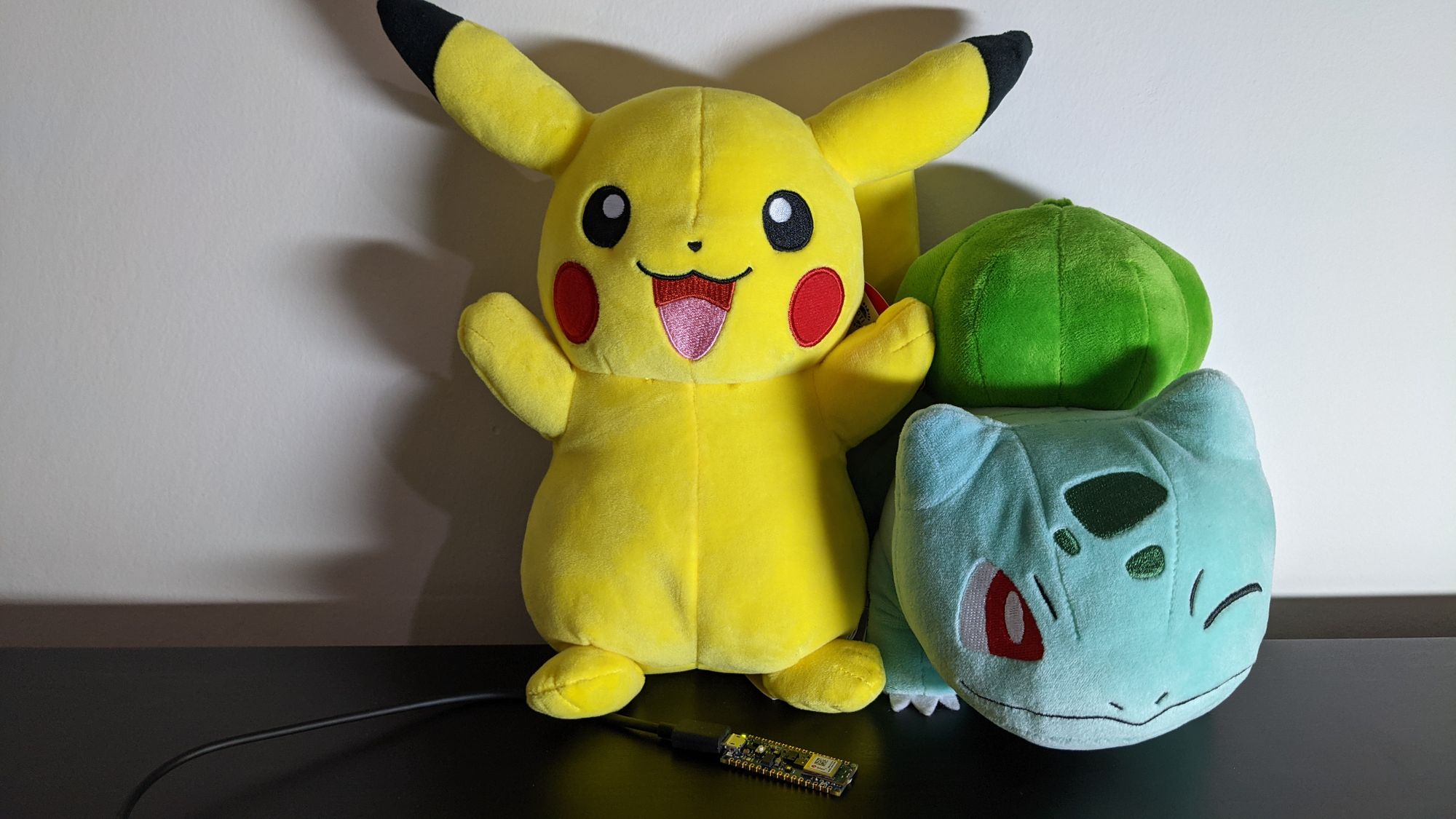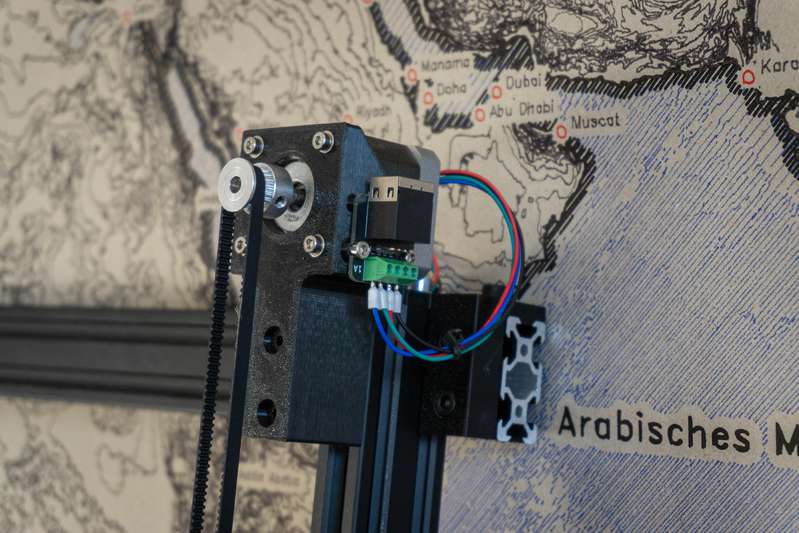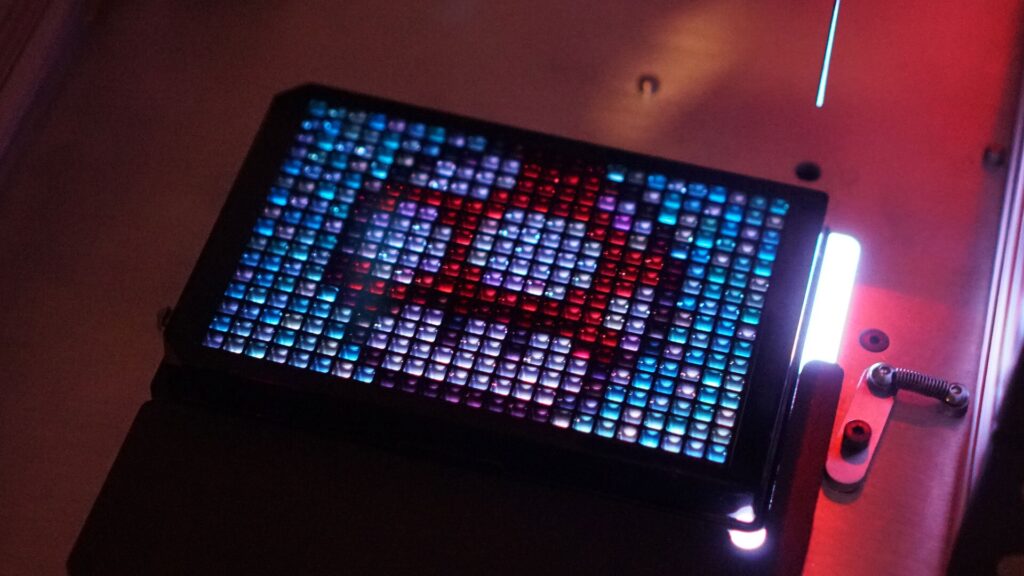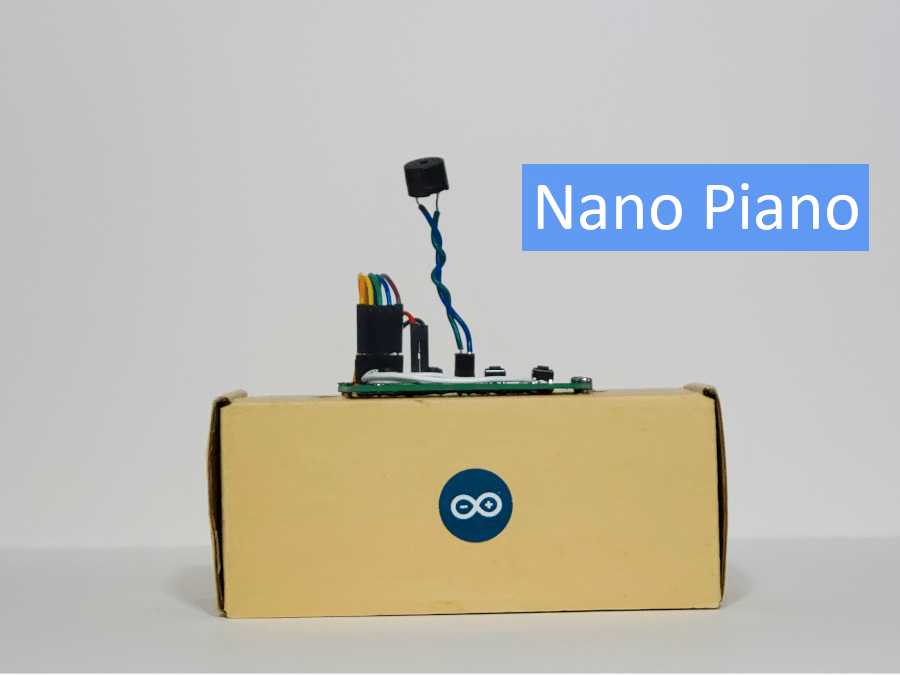To label used bottles that would otherwise go to waste, “tuenhidiy” created a CNC plotter that itself consists mostly of scraps!
The machine’s X and Z axes are formed out of a pair of old CD/DVD players, but instead of a traditional Y axis, it actuates two printer rollers to turn a bottle forwards or backwards. This allows the marking pen to be placed in just the right axial position, while still being very similar to a fully Cartesian (XYZ) plotter controls-wise.
